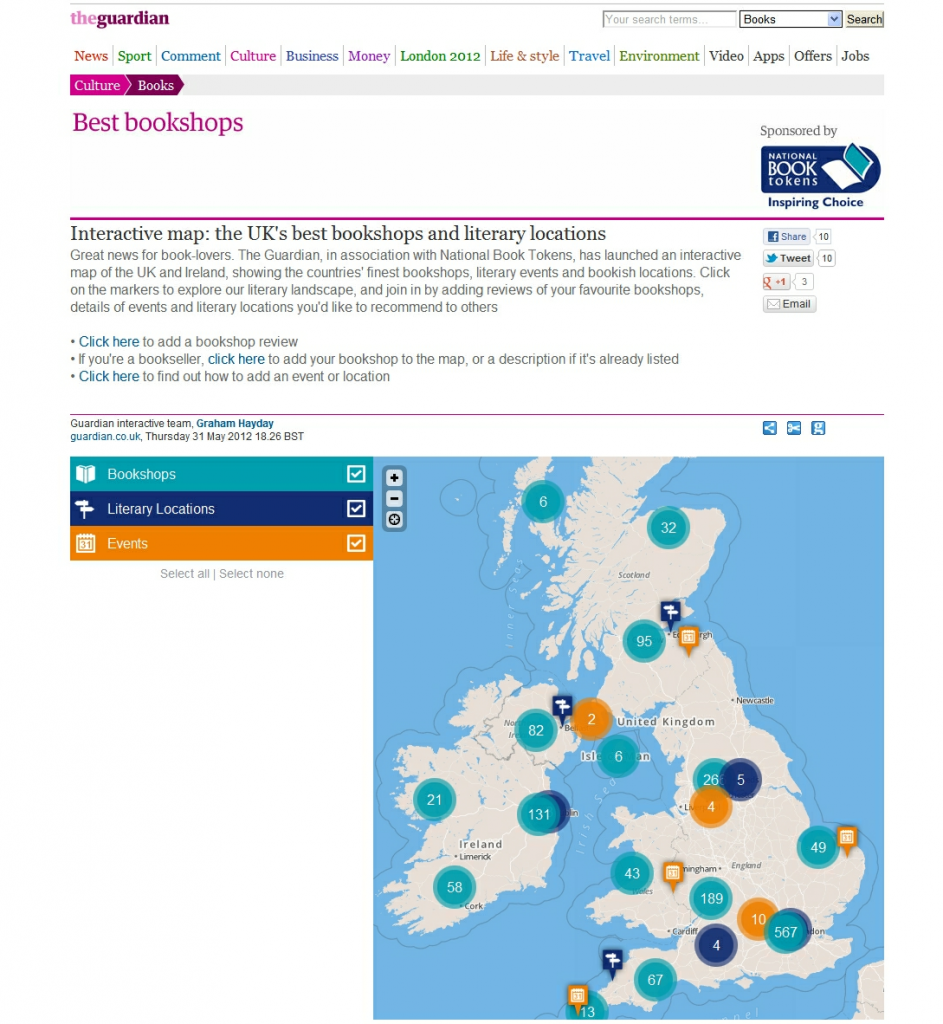The old saying, “if you build it they will come” doesn’t apply to participation in the same way it can sometimes work for information and entertainment.
However, active participation is possible and potentially very meaningful when the conditions for swarming exist. Â If bidirectionality is the way forward for media then it seems to me that great success lies ahead if editors and advertisers can evolve their models to fuel swarming projects.
The business of publishing online has come a long way since the early days of broadcast web sites and banner ads, though the high impact story or campaign is still very elusive on the Internet.
News operations are tackling this problem by adopting cultures of participation, and brands are getting wiser to the power of direct relationships with people.
John Battelle has been exploring this trend brands are making and even goes as far as stating that “all brands are publishers“:
“Dictating a message to your audience is no longer acceptable. Consumers online expect dialogue, so pairing your brand with relevant and passion-driven topics is one of the best ways to ensure that you are engaged with key audiences.”
Now, publishing and having conversations is much better than interrupting people, but this strategy can easily become broadcast disguised as conversation if you’re not careful.
Even worse, that strategy can reinforce the dependency on the major network firehoses where people spend their time online and create a layer of context between the individual and the source instead of the direct and meaningful relationship both publishers and advertisers want to have with people.
There is another way, a better way for everyone involved.
Swarm intelligence is about simple beings following simple rules, each one acting on local information. Â National Geographic published an influential feature in 2007 talking about how the swarm tactics of ants and bees have inspired new transport systems and even military tactics.
“Decentralized control, response to local cues, simple rules of thumb—add up to a shrewd strategy to cope with complexity.”
The mathematical challenges inherent in this type of world view are considerable, which, of course, makes swarm intelligence projects very alluring for most alpha geeks.
Author John Robb described how this swarming approach has fueled a new kind of protest movement, recently demonstrated by the Occupy demonstrations. Â He says, “Open source protest is an organizational technique.”
It’s made up of a few key ingredients, described here by mathematics professor Lee Worden(*):
- Plausible promise: An simple goal that people can get behind, that you can believably offer
- Open invitation: you don’t have to agree on everything, just on what we are doing
- Many leaders: let everyone innovate, do multiple things at once. Support anyone in a leadership role that either a) grows the movement or b) advances the movement closer to its goal. Oppose (ignore) anybody that proposes a larger, more complex agenda or those that claim ownership over the movement.
- Open source: If a new technique works, document it, use it again, and share it with everyone else. Copy everything that works.
- Spread the word of the movement as widely as possible.
It’s the antithesis of the Baby Boomer protest model which was about a collective barricade, a massive force of immovable inertia.
The open source protest conditions are not exclusive to a protest. Â They are natural tendencies that draw on human emotion and our sense of purpose. Â We want to belong to something and to participate in that thing, even if it’s just a small role in the overall goal.
This is precisely where media and marketing brands need to focus now.
How do you either initiate or participate in meangingful swarming activity?
We all know now that collaboration in and of itself is not interesting as an objective. Â But when a project does have a purpose collaborating with people from around the world who have varying views and levels of expertise can be absolutely thrilling. Â Ask anyone who contributes substantially to an open source project of any shape or size.
Just like open source protests or open source software development, swarming media activities tend to share the same principles and include the same ingredients – a widely understood purpose, simple little participatory actions that feed into the whole, a high level of openness in the system, authoritative advocates and demonstrable leadership among them at least on a part-time basis, repeatability when successes appear and efficient ways to share learnings, and strong signals to participate spreading far and wide.
There can be big successes with swarming activities in a more task-like point solution approach. Â It’s the viral marketing equivilent of breaking the Billboard Top 10 list. Â We experienced this in dramatic fashion at the Guardian with the MPs Expenses scandal.
Creating a more long term and sustainable solution for swarming activities that modify themselves, adjust over time, and fluctuate in intensity is a bit more complicated.
I would have trouble believing that either Jimmy Wales or Jack Dorsey had an explicit plan for turning their swarming engines into global phenomenons. Â They had a lot of help and a bit of luck along the way. Â That said, you can be sure they both intuitively understood the open source model and how to both lead and get out of the way at the right time.
I suspect many alpha geeks, as Tim O’Reilly calls them, will continue to find success working on various approaches to swarming tools and technologies over the next few years. Â Media organizations would be wise to think more broadly about swarming strategies and specifically about how to use these techniques in the news agenda and in branding campaigns.
It would be presumptuous to say we have an answer with the n0tice platform, but its undeniably capable of serving this function for customers who want to use it for swarming projects.
For example, look at the recently launched Best Bookshops project on the Guardian which is sponsored by National Book Tokens.
Both the Guardian editors and National Book Tokens are clever to imagine an activity that encourages people to reacquaint themselves with their local bookshops. Â It’s an interesting editorial proposition and a brilliantly selfless brand campaign that encourages people to do something good for themselves and local business.
They are clever to approach that campaign in a way that will fuel a collective interest in spending time at local bookshops through a swarming exercise rather than trying to push the idea on people.
It’s also interesting how many different constituents are involved in this idea. Â In addition to Guardian editors and the advertiser, National Book Tokens, bookshops across the UK are collectively posting events on the Bookshops noticeboard, and people are encouraged to post photos of their experiences at their local bookshops.
 There’s a shared experience at the local level that feeds a larger context with an understood purpose: local bookshops matter. Â To reinforce this larger purpose the campaign offers a unified view of the swarming activity presented as a map residing on the Guardian web site. Â It will continue to live there indefinitely.
There’s a shared experience at the local level that feeds a larger context with an understood purpose: local bookshops matter. Â To reinforce this larger purpose the campaign offers a unified view of the swarming activity presented as a map residing on the Guardian web site. Â It will continue to live there indefinitely.
Everybody wins here. Â People become reacquainted with their local bookshops. Â Bookshops build better ties with their community. Â National Book Tokens strengthens its brand and its role with bookshops and book shoppers. Â The Guardian earns money from the sponsorship and provides a great service to its readers. Â And n0tice builds a stronger user base across the n0tice network.
It’s a classic case of generative media in action.
The swarming media concept may need adjusting a few times before people get it right. Â But the Internet is ideally suited for it.
Sometimes I wonder, actually, is it possible that swarming activities are THE network-native format for successful campaigns? Â It’s early days still, but the opportunity seems absolutely massive.
